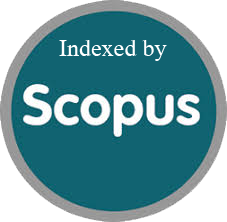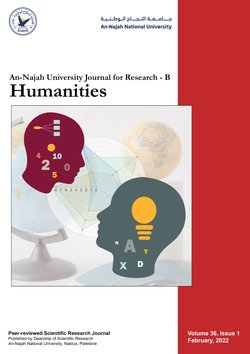Methods of Teaching Islamic Fiqh
Authors:
Article info
1999-09-20
2000-11-11
2000-11-11
59 - 88
Keywords
Abstract
This paper examined the most important methods used in the teaching of Islamic fiqh at the university level. The paper identified two types of methods: old and modern. It also prounded a criticism of both types of methods and highlighted their advantages and disadvantages. The study particularly highlighted the Islamic perception of these methods and the optimal characteristics of a fiqh instructor. The paper concluded with a number of suggestions and recommendations that may correct the course of university teaching of Islamic fiqh. The paper mainly calls for the need to diagnose the causes of students’ weaknesses in this field and to find solutions to these causes.
Qadomi, M. (2000). Methods of Teaching Islamic Fiqh. An-Najah University Journal for Research - B (Humanities), 15(1), 59–88. https://doi.org/10.35552/0247-015-001-003
[1]M. Qadomi, “Methods of Teaching Islamic Fiqh,” An-Najah University Journal for Research - B (Humanities), vol. 15, no. 1, pp. 59–88, Nov. 2000, doi: 10.35552/0247-015-001-003.
Qadomi, Marwan. “Methods of Teaching Islamic Fiqh.” An-Najah University Journal for Research - B (Humanities), vol. 15, no. 1, Nov. 2000, pp. 59–88. Crossref, https://doi.org/10.35552/0247-015-001-003.
1.Qadomi M. Methods of Teaching Islamic Fiqh. An-Najah University Journal for Research - B (Humanities) [Internet]. 2000 Nov;15(1):59–88. Available from: http://dx.doi.org/10.35552/0247-015-001-003
Qadomi, Marwan. “Methods of Teaching Islamic Fiqh.” An-Najah University Journal for Research - B (Humanities) 15, no. 1 (November 2000): 59–88. https://doi.org/10.35552/0247-015-001-003.
Methods of Teaching Islamic Fiqh
المؤلفون:
معلومات المقال
1999-09-20
2000-11-11
2000-11-11
59 - 88
الكلمات الإفتتاحية
الملخص
This paper examined the most important methods used in the teaching of Islamic fiqh at the university level. The paper identified two types of methods: old and modern. It also prounded a criticism of both types of methods and highlighted their advantages and disadvantages. The study particularly highlighted the Islamic perception of these methods and the optimal characteristics of a fiqh instructor. The paper concluded with a number of suggestions and recommendations that may correct the course of university teaching of Islamic fiqh. The paper mainly calls for the need to diagnose the causes of students’ weaknesses in this field and to find solutions to these causes.
Qadomi, M. (2000). Methods of Teaching Islamic Fiqh. An-Najah University Journal for Research - B (Humanities), 15(1), 59–88. https://doi.org/10.35552/0247-015-001-003
[1]M. Qadomi, “Methods of Teaching Islamic Fiqh,” An-Najah University Journal for Research - B (Humanities), vol. 15, no. 1, pp. 59–88, Nov. 2000, doi: 10.35552/0247-015-001-003.
Qadomi, Marwan. “Methods of Teaching Islamic Fiqh.” An-Najah University Journal for Research - B (Humanities), vol. 15, no. 1, Nov. 2000, pp. 59–88. Crossref, https://doi.org/10.35552/0247-015-001-003.
1.Qadomi M. Methods of Teaching Islamic Fiqh. An-Najah University Journal for Research - B (Humanities) [Internet]. 2000 Nov;15(1):59–88. Available from: http://dx.doi.org/10.35552/0247-015-001-003
Qadomi, Marwan. “Methods of Teaching Islamic Fiqh.” An-Najah University Journal for Research - B (Humanities) 15, no. 1 (November 2000): 59–88. https://doi.org/10.35552/0247-015-001-003.

Since 2019
Cite Score (Scopus): 0.5
Time to First Decision: 7 Days
Submission to Acceptance: 60 Days
Acceptance to Publication: 10 Days
Acceptance Rate: 20%
Call for Papers:
Special Issue on
Innovative Assessment in the Age of AI: Strategies for Quality
Why should you
Publish With Us?
An-Najah National University
Nablus, Palestine
Nablus, Palestine
- P.O. Box
- 7, 707
- Fax
- (970)(9)2345982
- Tel.
- (970)(9)2345560
- (970)(9)2345113/5/6/7-Ext. 2628
- [email protected]
- EIC
- Prof. Waleed Sweileh
